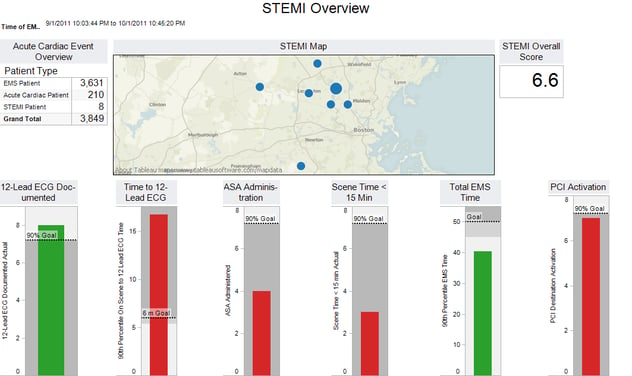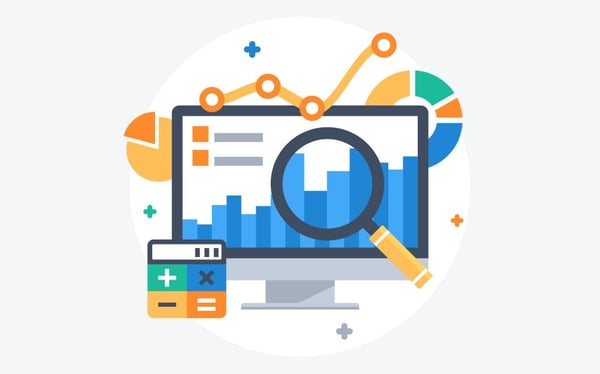News Alert: New ePCR Integration Simplifies EMS Data Management and Enables Better Care Coordination
6 Dashboards to Improve Clinical Outcomes
Organizations spend so much time and energy capturing data for tasks such as mandatory reporting and monitoring compliance; but successful management requires developing appropriate metrics to measure performance relative to goals and objectives
Was this information valuable?
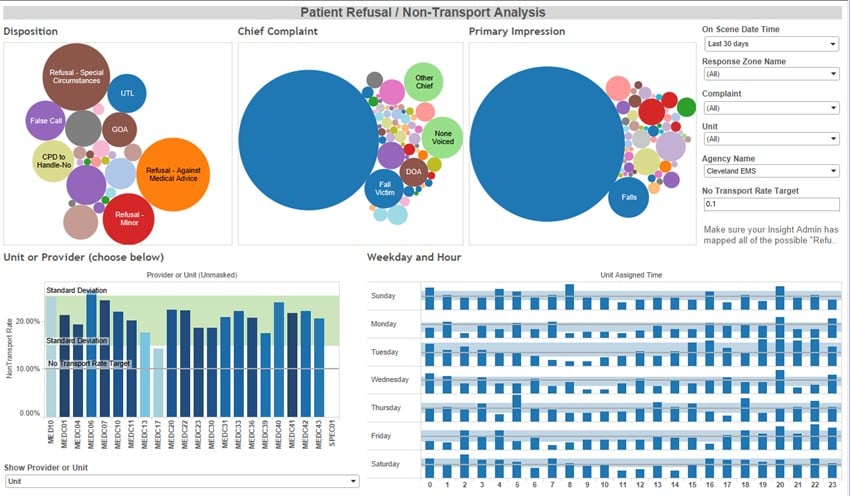
Organizations spend so much time and energy capturing data for tasks such as mandatory reporting and monitoring compliance; but successful management requires developing appropriate metrics to measure performance relative to goals and objectives. Benchmarks and Key Performance Indicators (KPIs) allow organizations to set goals and measure effectiveness. Without the intelligence that comes from benchmarking and KPIs, it’s impossible to know what is working, where weaknesses exist and what processes may need to change to ensure the health of your organization.
You already know that collecting valuable data is the key to measuring your company’s performance and helping you make sound decisions to meet long-term goals—but collecting data is only half of the equation. Equally important is understanding how gathered information should be presented so that it can be easily understood and used to drive meaningful change.
Until recently you had to be a spreadsheet wizard, Crystal Report guru or hassle the IT department to access and make sense of your data. Advancements in technology have empowered improvements in the ability to collect and process large volumes of data. Software service providers have responded with enhanced reporting capabilities that incorporate charts and graphs (visualizations) to simplify the ability to identify trends and measure performance.
Dashboards Vs Reports
While reports and dashboards are both capable of turning data into useful information, they have core differences. Reports are a traditional way of collecting and summarizing raw data, providing information based on detailed data generated from a specific search. Reports tend to be complex and are often text-heavy and not visually appealing. If your data is siloed or trapped in disparate computer applications, you may be forced to run separate reports to get a complete picture. This disjointed approach leads to skewed and unreliable data what you need most is a holistic picture of your organization.
"Dashboards can provide quick answers to those big questions from a quick glance."
Dashboards, on the other hand, allow for a better understanding of data and greatly reduce the time and complexity involved in data collection and analyzing. They display only the most vital information gathered from a given data set. While they may not be as detailed as reports, dashboards can provide quick answers to those big questions from a quick glance.
Dashboards are much more interactive in the way data is presented. They may be tailored for a specific role and display metrics targeted for a single point of view or department. The essential features of a business intelligence dashboard include a customizable interface and the ability to pull real-time data from multiple sources. Many fire and EMS performance leaders are adopting business intelligence dashboards to gain insight into their data to improve performance and monitor compliance across all departments.
ZOLL Clinical Dashboards
ZOLL has a library of dashboards to improve operational efficiency and clinical outcomes. But because it’s “Heart Month,” we will be discussing our clinical dashboards and their recommended usage.
Medic Skills. Medic skills is a measure of how a medic performs a particular intervention (for example, IV access) based on successful or unsuccessful qualifiers. You can easily see which medics are above or below the average of all medics; but more importantly, you can also see outliers that indicate an area of concern.
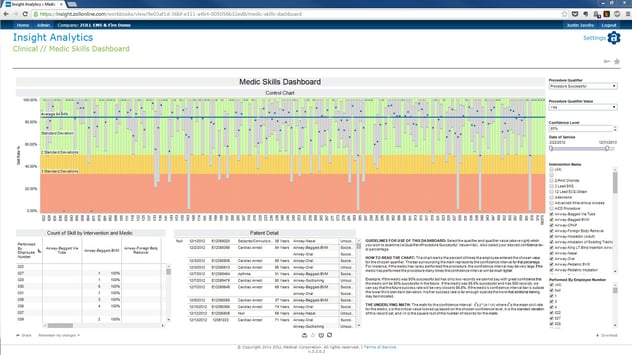
Narcotics Administration. This dashboard assists in the management of controlled substances. This is useful for identifying medics that give meds to more patients or overuse of specific medication.
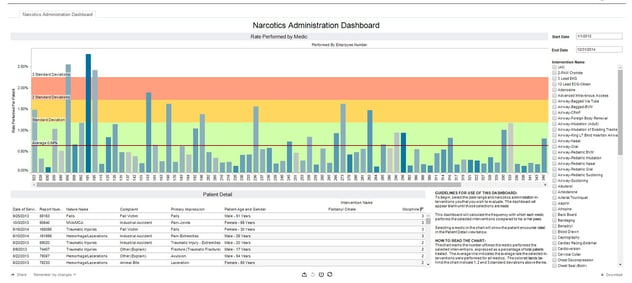
Patient Refusals. The patient refusal dashboard allows you to see which medics performed a full assessment and took vital signs or other required information before leaving the scene. You can easily track your patient refusal rate and identify the outcomes most reported for refusals.
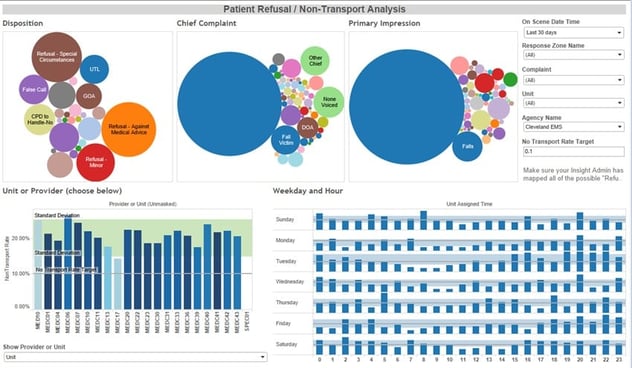
Time to Administer Intervention. The Time to Administer Intervention dashboard is for measuring protocol compliance. You set the threshold for appropriate minutes for a particular intervention and can quickly see who falls above and below that threshold.
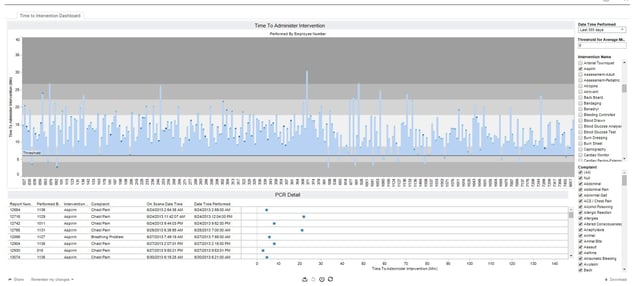
STEMI Performance. The STEMI Performance dashboard is designed to help improve the outcome of STEMI care through the evaluation of STEMI care across your organization. The dashboard allows you to evaluate the level of service and care by looking at specific performance measures know to improve the outcome of STEMI care such as obtaining a 12 Lead; time to ASA; minimizing scene time; and percutaneous coronary intervention (PCI) activation.
Highly visual graphs show you in green the areas that are good and red indicates the areas that need improvement. An overall STEMI score is a tool that lets you measure your organization over time as well as benchmark yourself against other agencies.
Insight Analytics. Insight Analytics provides ZOLL customers with the tools to quickly and easily measure performance through real-time visibility to your data and greater insight into KPIs. Now fire and EMS organizations can use this multidirectional data analysis tool to evaluate the data collected from ZOLL software, for critical decision-making and planning decisions. The easy-to-use dashboards provide information at a glance, giving immediate insight into protocol, compliance, productivity and more. Manage operations through a level view to quickly identify trends and data outliers or drill down for root causes.
Empower Employees
With a clear definition of KPIs, organizations are empowering employees to optimize and improve efficiency across departments. With a window into performance, everything is visible and it is clear that management and employees are working toward the same goals. Many organizations are developing scorecards to display progress over time toward specific goals. Employees can use scorecards to measure and track their productivity and compare performance results with peers.
Related Posts
How STAT MedEvac Connected Device, Software, and Data Technology To Enhance QA and Elevate Care
Podcast: 4 Ways ePCR Software Can Relieve EMS’ Biggest Headaches
ZOLL Pulse Blog
Subscribe to our blog and receive quality content that makes your job as an EMS & fire, hospital, or AR professional easier.
ZOLL Pulse Blog
Subscribe to our blog and receive quality content that makes your job as an EMS, fire, hospital, or AR professional easier.


